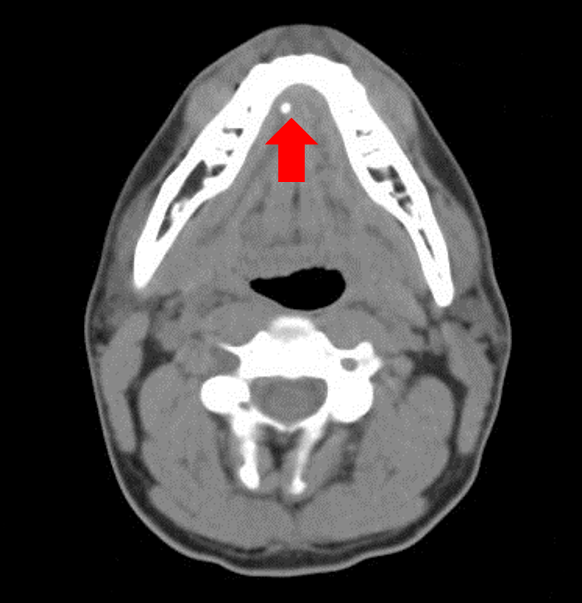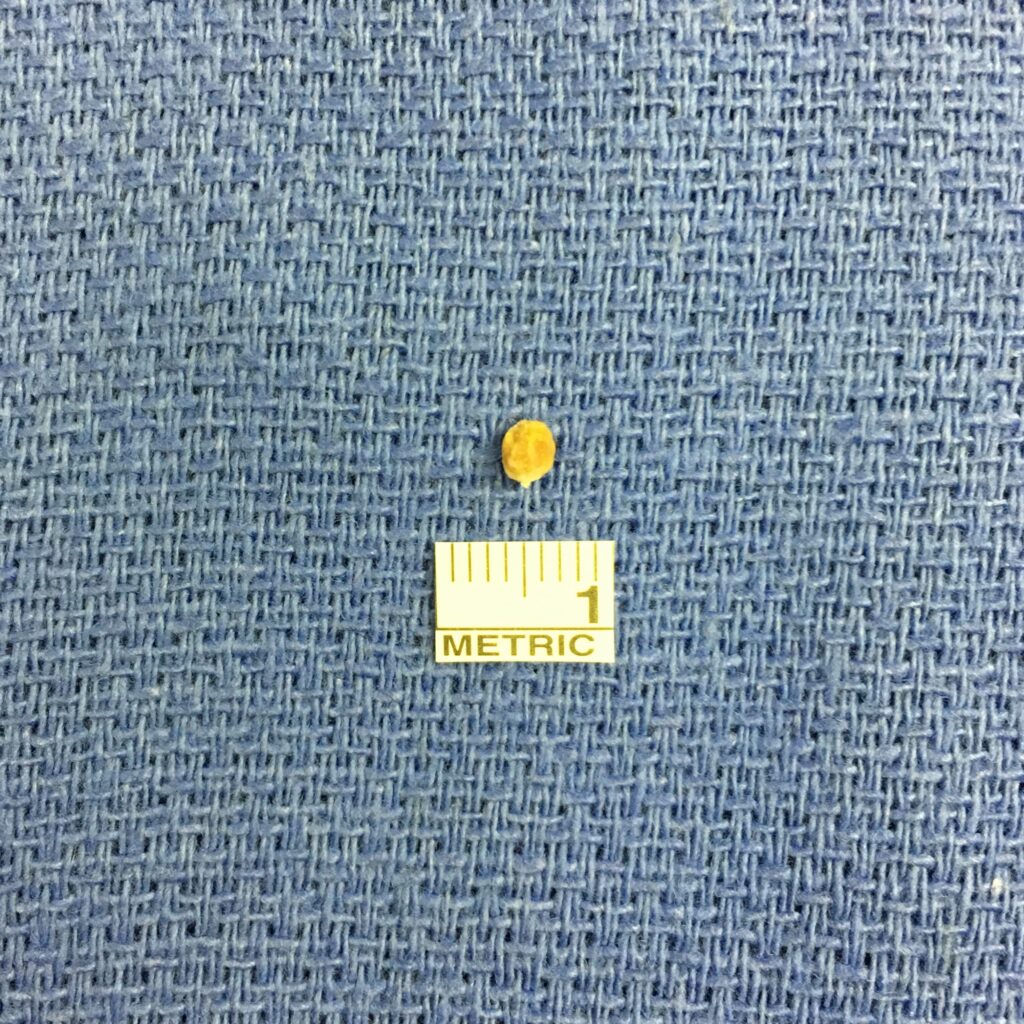Salivary Stones
Salivary stones form in the ducts of the salivary glands located in the cheeks (parotid glands) or beneath the jaw (submandibular glands). By themselves, they are not painful and at times are asymptomatic. Most stones are very small, on the order of a few millimeters in size. Stones are sometimes diagnosed clinically, and on CT scan, and they show up as white spots that look like bone.

This image shows a 3 mm stone in the right submandibular duct.

Here is the stone after it was removed through salivary endoscopy, beneath a ruler which is 1 cm in length.
When salivary stones obstruct the flow of saliva, the pressure backs up into the salivary gland and causes inflammation of the gland, pain, and even infections. Many times, symptoms can be improved with use of warm compresses, gentle massage, and use of sour candies which encourages the salivary glands to produce more saliva. Symptoms may improve over time, but the definitive management of salivary stones is removal. Removing a stone can sometimes be performed in the office under local anesthesia, or through salivary endoscopy where small telescopes are used to navigate the ducts and remove the stones. Occasionally, the entire gland must be removed through surgery.
